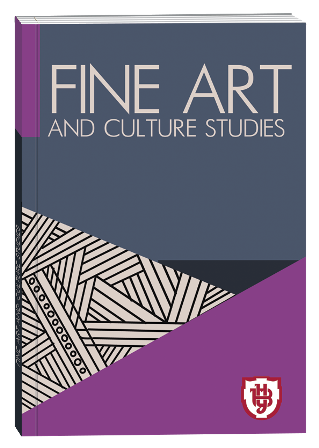ESPECIALLY THE DEVELOPMENT OF DULCIMER IN THE EUROPEAN MUSICAL CULTURE XIX-XX CENTURY (ORGANOLOGICAL ASPECT)
DOI:
https://doi.org/10.32782/facs-2025-2-19Keywords:
dulcimer, design, improvement, folk-instrumental mastery, acoustic propertiesAbstract
In modern world musical culture, dulcimers occupy an important place, acting as a unique bridge between folk tradition and academic art. Their rich timbre and wide range of sound capabilities make this instrument popular among both folk music performers and professional musicians working in classical and modern genres. The growing interest in dulcimers is due not only to their musical expressiveness, but also to the rich history of development, which reflects the complex processes of cultural interaction and technical innovations in different European countries. This topic is relevant for scientific research, as it allows for a deeper understanding of the evolution of the instrument, its role in the formation of national music schools and its impact on modern performing practice.The purpose of the article is to identify the patterns and features of the constructive transformation of dulcimers in European countries of the 19th–20th centuries, as well as to determine the influence of socio-cultural, professional and technological factors on the formation of different types of this instrument and their integration into professional musical practice.The methodology. The article uses organological analysis to study the constructive features of cymbals, historical and cultural analysis to clarify the influence of socio-cultural and ethnic factors on their development, a comparative method to compare national variants of the instrument, as well as source analysis to study scientific and archival sources.The scientific novelty lies in the comprehensive organological study of the constructive evolution of cymbals in European musical culture of the 19th – 20th centuries.Conclusions. The evolution of cymbals took place in two main ways: – universalization (creation of concert models, which became an example of a combination of multi-ethnic and multi- temporal technical capabilities and findings in the field of design improvement and established themselves as an object of cymbal professionalism in many European countries); – specialization (adaptation of traditional instruments to the needs of national music schools, which resulted in the emergence of Ukrainian, Latvian, Moldovan cymbals, etc.).
References
Баран Т. Цимбали та музичний професіоналізм. Львів : Афіша, 2008. 224 с.
Гуменюк А. Українські народні музичні інструменти. Київ : Наукова думка, 1967. 243 с.
Лисенко М. В. Народні музичні інструменти на Україні / за ред. М. Т. Щоголь. Київ : Мистецтво, 1955. 62 с.
Незовибатъко О. Українські цимбали. Київ : Муз. Україна, 1976. 54 с.
Незовибатько О. Українські цимбали та їх удосконалення : автореф. дис. канд. мистецтвознавства : 17.00.03. Київ, 1971. 25 с.
Незовибатько О. Школа гри на українських цимбалах. Київ : Мистецтво, 1966. 301 с.
Супрун-Яремко Н. О. Цимбали в системі наукових поглядів Гната Хоткевича : Шостий світовий конгрес цимбалістів : наук. зб. / Львів, 2001. С. 54-58.
Теуту І. Українські цимбали як об’єкт наукового дослідження : Українське мистецтвознавство: матеріали, дослідження, рецензії. Вип. 14. Київ, 2014. С. 53–60.
Хоткевич Г. Музичні інструменти українського народу / 2-га ред. Харків : Вид-во Савчук О., 2012. 512 с.
Шрамко І. З історії цимбалів. Київ : Музика, 1983. С. 13–14.
Шрамко І. Українські цимбали / Народна творчість та етнографія. № 4 (218). 1989. С. 13–22.







